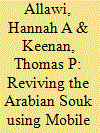| Srl | Item |
| 1 |
ID:
176741


|
|
|
|
|
| Summary/Abstract |
In the last decades, the debate on renewable energy has received international attention. In the European countries, several wind energy projects encounter objections and protests from the neighbouring population of wind farm sites. This study aims to understand the drivers of this obstructive behaviour suggesting the main issues to discuss for adequate regulatory strategies to promote at community level. The novelty of this study is that for the first time, qualitative – Focus Group – and quantitative – Optimized-Analytic Hierarchy Process and Monte Carlo simulation – approaches, are used synergistically to support the view of a social acceptance to wind energy. In particular, the analysis focuses on: i) People’s perception of wind energy in a context of public engagement; ii) Assessment of the factors affecting a wind farm; iii) Differences occurring in people’s perception living nearby or far from wind farms. Main results suggest a general critical attitude due to misinformation and lack of transparency of governmental institutions. Moreover, the density of turbines, dismantling process and impacts on landscape and ecosystems need particular attention. Finally, our results show that the distance to wind farms would not sensibly affect the social acceptance across groups of stakeholders.
|
|
|
|
|
|
|
|
|
|
|
|
|
|
|
|
| 2 |
ID:
191868


|
|
|
|
|
| Summary/Abstract |
This article discusses the outcomes of a Focus Group thematic analysis that revolved around the topic of using mobile Augmented Reality (AR) technology to help revive the Arabian Souk. The Old Souk of the city of Abu Dhabi was utilized as a case study for revival, using AR for a new form of smart tourism for the city. Major themes revealed both intangible and tangible elements through a variety of shops, products and personal experiences from those who have visited the Old Souk. The themes were then turned into an AR experience, in the form of three-dimensional (3D) computer-aided models, to aid in experiencing the once existing Old Souk on its original site today. This article points to the potential of recreating the Arabian Souk using AR technology as part of the Arabian Gulf’s smart tourism experience.
|
|
|
|
|
|
|
|
|
|
|
|
|
|
|
|